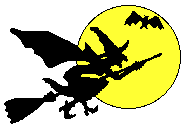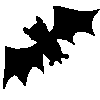Mr Michele De Nardo
EMAIL: techfiles@yahoo.co.uk
SELF-INFLICTED
TEST
Last
Updated: 2 April 2000
Part 1: QUESTIONS
Define and explain the following in 20 minutes:
A1) BIOS
A2) CMOS
A3) SIMM
A4) DIMM
A5) UART
A6) ECP
A7) Which IRQ is typically used by LPT 2?
B1) ISA
B2) EISA
B3) PCI
B4) AGP
B5) IDE
B6) EIDE
B7) ATA-2
B8) SCSI
B9) DLT
C1) RAID
C2) RAID 0
C3) RAID 1
C4) RAID 3
C5) RAID 5
C6) UNIX SHELLS
C7) CSMA/CD
C8) TCP/IP
![]()
Part 2: ANSWERS
A1) BIOS = Basic Input/Output System.
A2) CMOS = Complementary-Symmetry Metal Oxide Semiconductor.
A3) SIMM = Single Inline Memory Module: 30 or 72 pins memory.
A4) DIMM = Dual Inline Memory Module.
A5) UART = Universal Asynchronous Receiver Transmitter. A integrated circuit used to control the COMs ports.
A6) ECP = Enhanced Capacity Port: parallel port standard for PCs.
A7) IRQ 7
B1) ISA = Industry Standard Architecture.
B2) EISA = Extended Industry Standard Architecture.
B3) PCI = Peripheral Component
Interface.
B4) AGP = Accelerated Graphics Port.
B5) IDE = Integrated Drive Electronics.
B6) EIDE = Enhanced Integrated Drive Electronics.
B7) ATA-2 = same as EIDE.
B8) SCSI = Small Computer System Interface.
B9) DLT = Digital Linear Tape.
C1) RAID = Redundant Array of Independent (or Inexpensive) Disks.
C2) RAID 0 = splits data across a number of drives while treating all of them as a single unit.
C3) RAID 1 = write identical data to two identical drives (mirroring).
C4) RAID3 = one parity drive and three or four data drives.
C5) RAID5 = distributes the parity information across all disks. It is an emprouvement of RAID 4.
C6) UNIX SHELLS = Cshell, the Bourne shell, and the Korn shell.
C7) CSMA/CD = Carrier Sense Multiple Access with Collision Detection.
C8) TCP/IP = Transmission Control Protocol over Internet Protocol.

![]()
